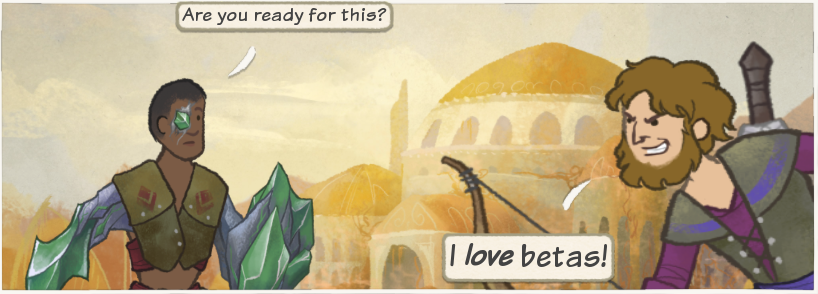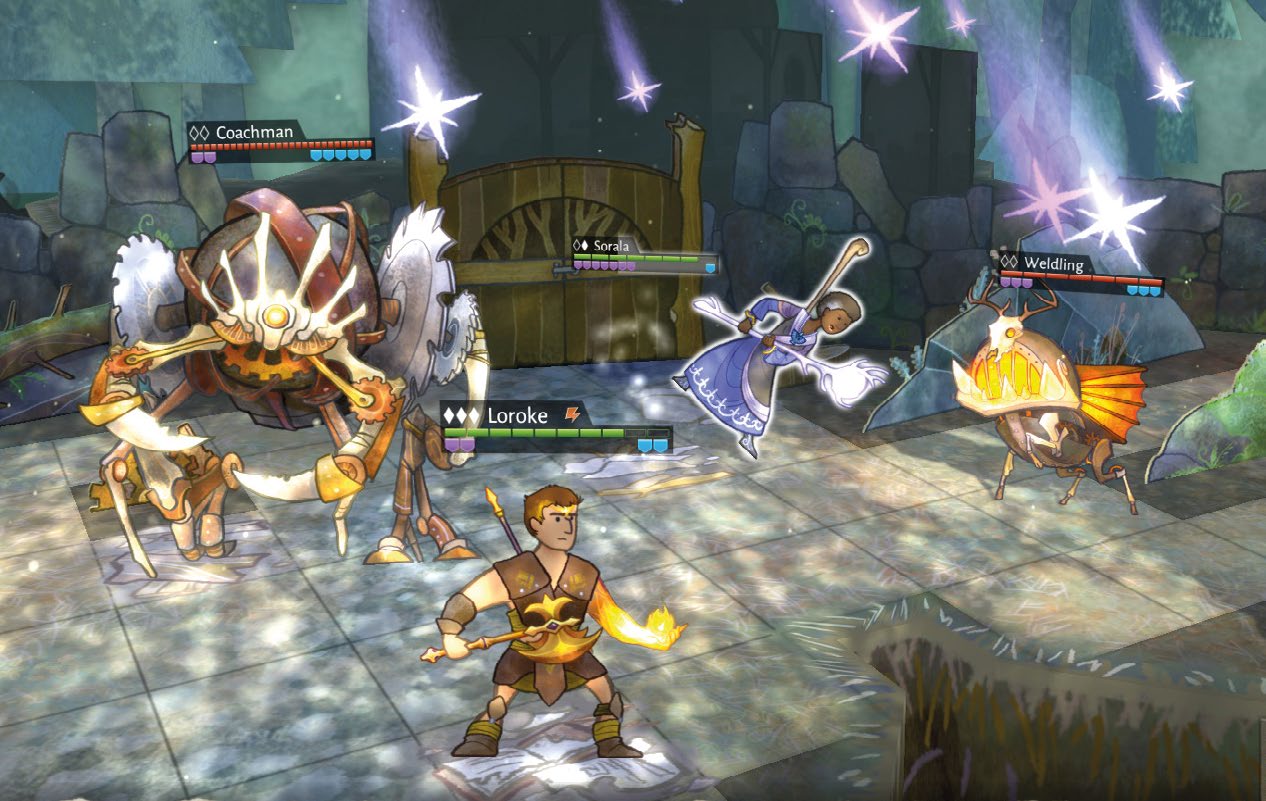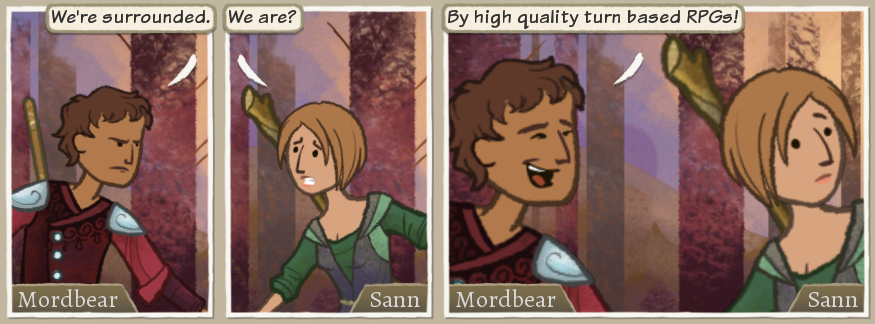
You can edit these characters to whatever aesthetic and statistical minutiae you’re interested in, but I prefer to let the computer do its thing- Wildermyth is a game of procedural generation, after all. Everyone is assigned randomized traits such as “bookish leader” or “compassionate hothead,” alongside one of three classes: warrior, hunter, and mystic. Wildermyth starts with a roll of the virtual dice to determine your party’s founding members. I’ve never felt this close to characters cooked up by an algorithm before. What’s remarkable is that this story I’m so invested in, that unfolds grippingly like the fantasy books I read as a kid, is the result of systemic, procedural generation. I line them up on the board behind younger members of my party, some of whom are the children of party members who fell in love and got married. In my mind, Aforn, Nym, and Inneste are more vulnerable because of their old age.

The next time my party is called into the game’s turn-based combat, I change tact nearly without realizing. But this was the moment I realised quite how fond of these veteran characters I’d grown. There’s been plenty of the nail-biting victories, crushing defeats, and stirring encounters I’d normally expect from a fantasy RPG involving the fate of the realm. The big thing is that gear can’t be traded around because the game is violently allergic to inventory management, though there are mods that can change that.This is far from the most exciting anecdote I have from my time with Wildermyth. Plus there’s a lot of lootable items that fall outside this scheme, since they’re not craftable, and the diversity of lootable armor pieces is pretty broad from what I’ve seen. There are also 4 tiers of any given weapon type (0 - 4) and the artifact designation, which provides additional bonuses, so it’s more complex than it looks at first. It should be noted, though, that while the art for all 5 is different the base stats are the same except for the elemental bonus. To clarify, you can craft any elemental weapon you’ve had in a previous campaign, so there are really 5 types of (for example) dueling swords, you just may only have access to two because you’ve only unlocked one elemental variant for that weapon type. And there’s a big screen showing all the weapons you’ve discovered in your games so far. There is some ‘loot meta’ too, where the elemental items you unlocked in a campaign can be saved with a legacy character for use in future games. All of the weapons are available for crafting, if you have the resources. These seem to be randomly drawn from a pool for each campaign, mainly to do with their elemental type. There are two of each type of ‘thing’ (like two swords, two great swords, two bows, etc) and each has three levels/upgrades. There is no inventory management or transferring items, it’s all bound when you choose who gets something, and replaces anything that might have already been in that slot. You usually get an item reward for each event/combat you do. Many skills seem to have a few upgrade levels - note that everything tends to add abilities/buffs/debuffs, not just minor stat increments. Loot and skills are simplified and I think this works well too, really fits the character of the game.įor skills you are presented three choices when a character levels up, these seem to be semi random in that they’re selected from a big pool for that class, and there are usually two new ones and one upgrade for an existing skill. It is absolutely great for short sessions, one of my favourite things about it. How is the loot and skill development? Is this game compatible with short-ish play sessions? That said, if you enjoy good tactical combat, narrative rooted in actual character, and a larger scope of time than your typical RPG I think it’s safe to say this is something you might like. The time scales are also vastly different, Wildermyth generally spans perhaps 2, at most 3 generations.

While characters can have children that join your party there’s no “genetic” component to that, the parent-child relationship is just another hook for story telling. Wildermyth is very interested in telling stories rooted in relationships between characters. I didn’t play a lot of Massive Chalice so I’m not the best qualified person to answer this, but from what I know they’re doing pretty different things while both being centered around a tactical RPG core. Wildermyth sounds like it encourages players to replay in ways that MC did not?

Is it fair to say that if you enjoyed Massive Chalice you would enjoy Wildermyth? I assume they play quite differently and yet they both generate great stories, which is attractive.Īs much as I liked Massive Chalice it was a very enjoyable ‘one and done’ experience for me. All I know about this game is what I have read here and your collective enthusiasm is infectious.


 0 kommentar(er)
0 kommentar(er)
